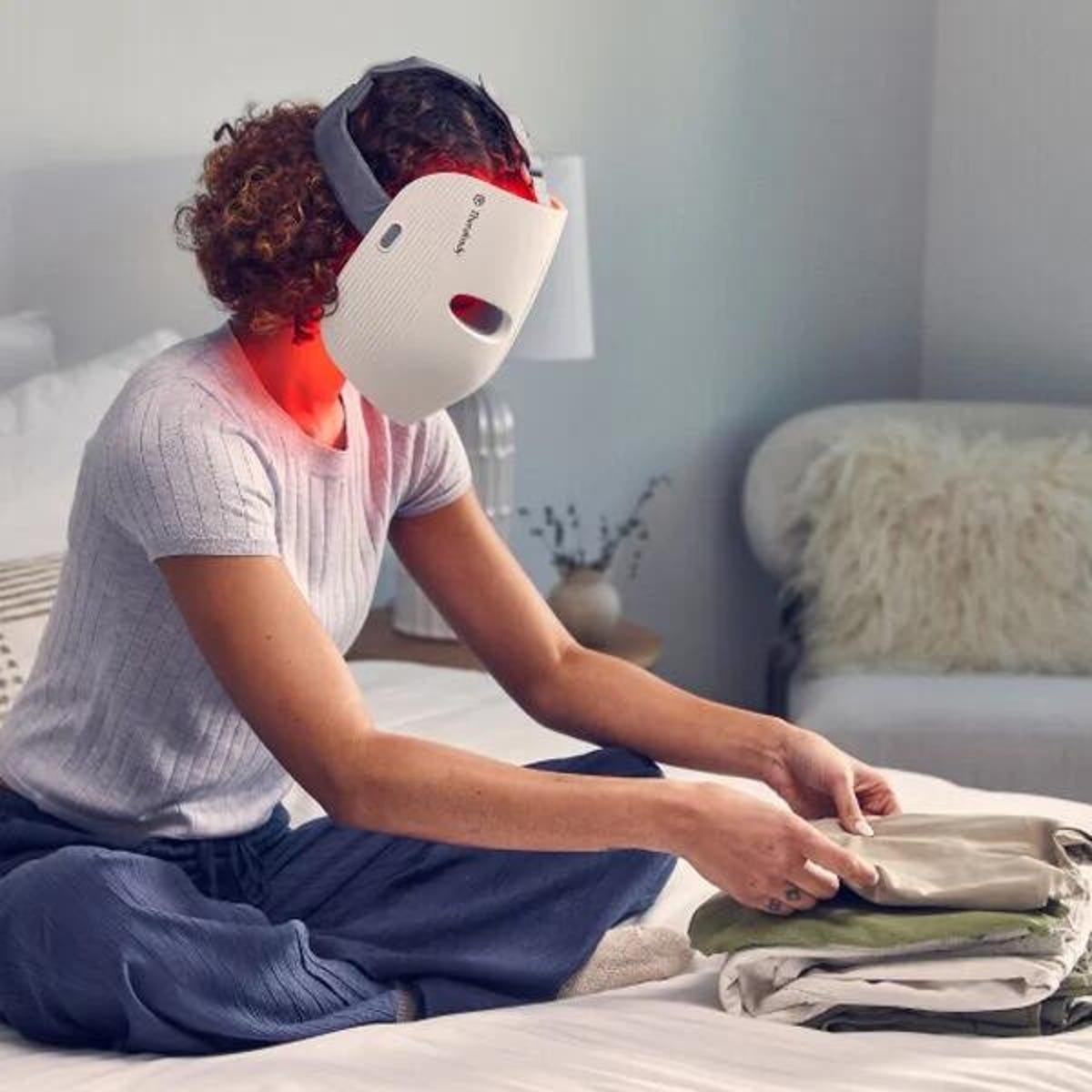They look a little robotic, but light-emitting diode masks are the new face of skincare, giving salon-quality to a product anyone can use at home.
Mask-makers say they can improve people’s acne, reduce fine lines that come with aging, even skin tone and give it an all-around glow. This is done by simply sitting with a mask on for a few minutes, letting the light beam its magic into your face. Are LED masks worth the hype?
“It depends how much hype you’re seeing,” Dr. Steven Daveluy, board-certified dermatologist and program director at Wayne State University Department of Dermatology, said in an email.
“There is some early evidence that they can be helpful, but the evidence is limited.” Larger studies that directly compare LED masks to traditional treatments are needed, Daveluy said, although it can be normal to have only smaller studies to go off when something is new.
They also have a pretty good safety profile (LED light is safe for the skin, unlike UV light) and would be a good option for people who want to avoid taking medications or those more traditional skin-care treatments in the first place, according to Dr. Danilo Del Campo, board-certified dermatologist with the Chicago Skin Clinic.
“It’s something that’s a little more on the natural side, but it is founded in actual evidence,” Del Campo said.
The catch? A multi-hundred dollar price tag. A good mask with adequate power starts around $350.
“In my opinion, the biggest risk is the money,” Del Campo said.
Here’s everything we know about LED face masks so far.

Another example of what you’ll look like wearing an LED face mask. Therabody’s LED face mask is FDA-cleared and contains multiple types of light.
How LED face masks compare to retinol and acne treatments
We don’t know yet, because no one has published those studies. But certain home skin care treatments, like using an over-the-counter retinol, have a “long history of proven efficacy,” Black said.
“Over-the counter retinol treatments have been used for fine-line reduction for decades and have more data supporting their effectiveness,” Black said, adding that using a retinol or retinoid is more simple for some patients than wearing an LED face mask, which some may find awkward.
“On the other hand, I do have a few patients that are keen on using LED face masks and find it to be a relaxing part of their skin care routine,” she said.
In terms of acne treatments, the best treatment depends on the type of acne or what’s causing it, according to Black. Hormonal acne is sometimes treated with birth control pills or oral spironolactone; more severe acne can be treated with a medication like Accutane (oral tretinoin) and rosacea acne with a different medication still, Black said. All of these have more research behind them than blue light for acne treatment.
“What I am getting at is that I don’t want patients that really need medical help with acne wasting time and money trying to treat acne with at home LED masks if there are options that would be more appropriate for them,” Black said.
“Acne patients really should seek consultation with a board certified dermatologist.”
How to choose a light therapy or LED mask
So, you’re interested in an LED face mask. The first thing to do, according to Del Campo, is to make sure you’re doing the preventive skin care things that have been proven effective. This includes wearing sunscreen and otherwise protecting your skin from too much sunlight, staying hydrated and using a retinol or retinoid product.
“If someone isn’t able to do part one, it doesn’t make sense to do part two, in my opinion,” Del Campo said.
Then, look for a few key features and specs.
Wavelength
For red light in masks, the wavelength range is between 630-660nm, and most devices are around 633nm, Daveluy said.
Irradiance
Daveluy says it should be between 40-150 mW/cm2.
“If you buy a device without adequate power, you’ll be wasting your time and money.”
Transparency
Secrets aren’t any fun, especially when you’re shopping for a spendy face mask.
“If you are having trouble finding these features for a device, stop wasting your time and look at a different one,” Daveluy said. “Companies with the right settings are happy to share them, while devices with inadequate settings will avoid sharing that info.”
Are LED face masks worth the money?
It completely depends on what you want to spend your money on, to be frank — these LED face masks do not come cheap. As is true for anything in the health and wellness market space, make sure you check in with a dermatologist or medical expert if you have a persistent skin concern to make sure you’re doing the right things for your health before you add on home treatments.
If skincare isn’t your top priority, or you haven’t fallen into the investment trap of glow-boosting, anti-fine-line propaganda (I am guilty of this) or you don’t like the idea of wearing a transformer-looking mask every other night in the name of self-care, this product may not be worth it.
As someone who spends the majority of their wellness dollars on skin care products (second only to the high prices of food — which I think is the best health investment of all time — and the unfair upcharge for vegan meat), I am swayed enough based on the small amount of evidence and glowing reports to consider investing in a face mask with the right specs. I may have been wrong in my early cynical and non-believing take on red light therapy hype, and if I ever test the LED face masks, I’ll update this article.
If you check the hydration, nutrition and prevention boxes that build a solid base for skin care, and you’re ready to elevate your skincare to the next level, LED face masks may be worth checking out.
